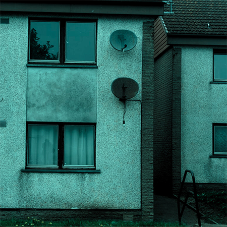One of the first things that catches your eye when you arrive at a building, is the door – after all, you have to open it and walk through it to access the building. These indispensable parts of our home don’t often get the praise they deserve, even though there are few things more important in your home than your front door… without them, anyone could come and go as they please!
Wood has been used as a building material for hundreds of years, given its characterful nature and its durable properties. However, as undeniably beautiful and thermally effective as wood as a material can be, there are so many more options available to homeowners in the 21st century - one of those options being uPVC.

It may have caught your noticed that a rising number of homes in the UK now choose uPVC doors, and why not! uPVC is a surprisingly strong and stable material – and it has a very modern look.
Both materials have their benefits and pitfalls – but is one above the other? In this blog we take a look at the pros and cons of uPVC and wood and ask: which one should you choose for your home?

About aesthetics
Timber doors exude that certain kind of refined sophistication that cannot be replicated by uPVC. They won't fade or discolour and can be updated easily with a fresh coat of paint or stain. They also offer subtle design features that create a traditional or contemporary quality feel, helping new fittings blend into an old home or adding a touch of luxury to a modern building. And as stable and convenient as uPVC might well be, doors made of this material can be plain and uninteresting to look at. Due to the nature of the material, uPVC is not as flexible in its design options as other materials.

Longevity
The lifespan of uPVC doors is expected to be around 35 years, though obviously this will depend on no only the quality of the material, but how well it's been fitted. On account of being porous, timber as a material may warp and change shape over time as it gets wet and dries out. This is not the case with uPVC, as it is a nonporous material which will remain in a stable shape and structure throughout its lifespan.

High performance
uPVC windows are extremely energy efficient so installing them can really help to reduce heating costs and keep your home nice and warm. Due to its resilience, strength and robustness, uPVC is also very reliable when it comes to your home security. However, timber is a naturally insulating material, offering similar thermal efficiency to uPVC.

Sustainability
The good news is, that once they’ve been built and fitted, uPVC doors won't have any negative impact on the environment and if you want to replace or get rid of them it's easily recyclable – and whilst it might very well discolour slightly over time, uPVC generally requires very little maintenance. However, timber is a natural material, emitting less CO2 in the manufacturing process than its manmade rivals. Ultimately, though, timber materials come from trees, and no matter how many trees we cut down, there is always the option of planting more. The creation of uPVC however, is heavily reliant on supplies of oil, which will run out eventually.

How much will it all cost?
There’s no way around it, really. Timber is generally more expensive than uPVC.
So what should you do?
UPVC doors are often a cheaper alternative than wooden doors, however they are a lot less plain in style and the material choice is generally seen as bad for the environment. Wood doors are better for the environment, have a greater thermal efficiency and can be a lot more aesthetically pleasing. Ultimately it might be down to little more than personal preference (and finances obviously) but whatever decision you make, make sure it’s the right one for you and your project.
Like this? Check out our Residential Doors hub for more information!
Related Blog Articles



crop192.png)












